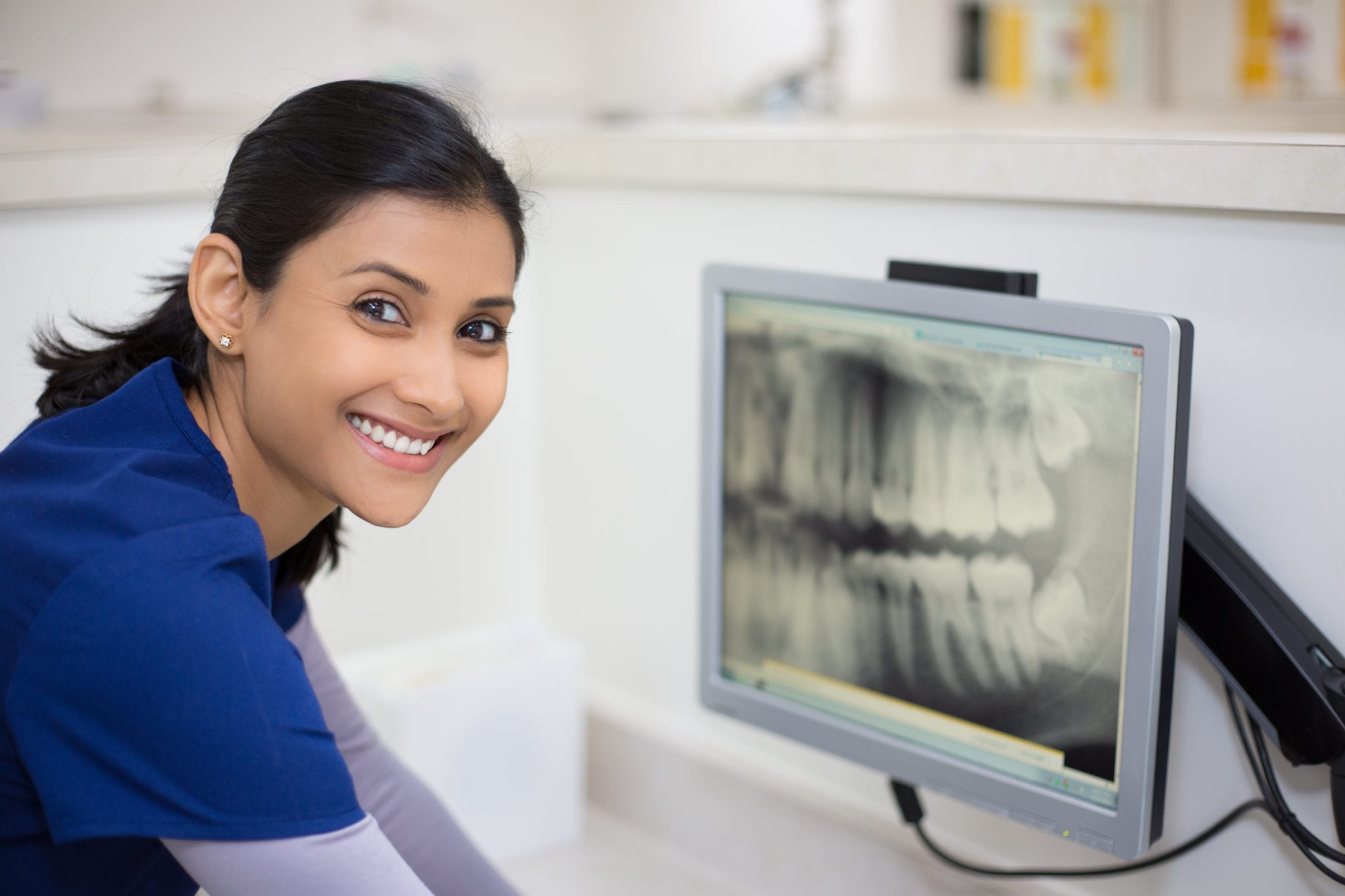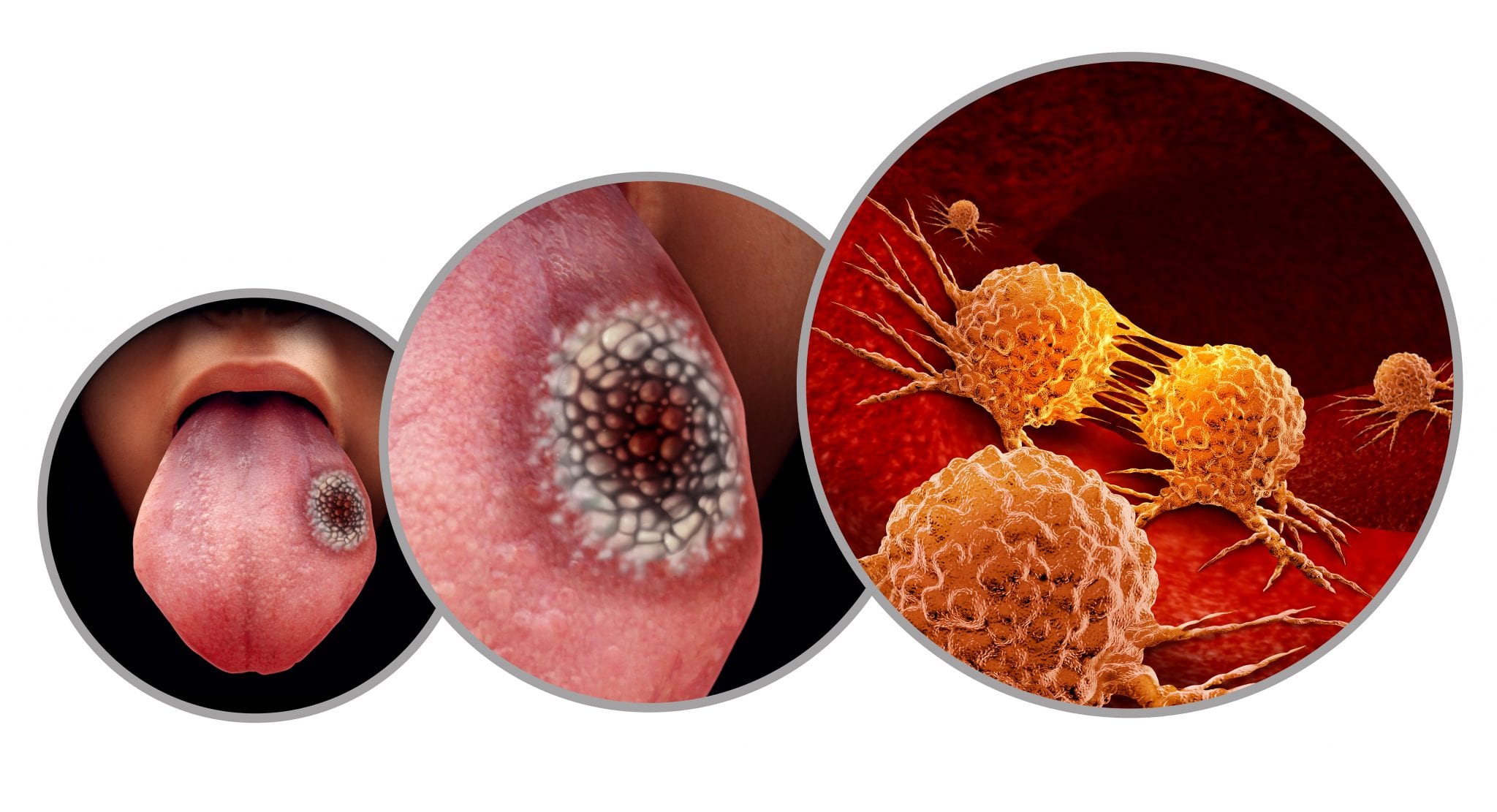
Immediate and widespread crises like the current coronavirus pandemic can easily overshadow awareness efforts of other important health concerns. It only makes sense that such clear and present danger like a quick-spreading virus takes precedence.
At the same time, 53,000 annual oral cancer diagnoses in the US alone isn’t nothing, so it’s important to share what we know and what preventative measures our patients can take.
As April is Oral Cancer Awareness Month, addressing a particularly common question from patients seems fitting: Will X-rays give me oral cancer?
For those of you concerned, here’s what you should know about the x-rays used at dental offices today and what measures you can take in order to remain oral cancer-free.
Digital Radiography Today Involves Very Little Radiation
Dental x-rays aren’t what they used to be. Today, we use a fast, safe, and comfortable method of taking x-rays of your mouth: digital radiography.
X-rays are taken of your teeth to allow the dentist to evaluate your dental and oral health. Today’s process includes placing a sensor in your mouth that emits a very tiny amount of radiation.
This allows the technician to take incredibly detailed images that are immediately available on a digital screen. The radiation using this technology exposes you to is a small fraction of traditional x-rays.
The amounts required are perfectly safe and not a danger to your health.
Defining Oral Cancer and Determining Whether You Have It
Oral cancer is defined as cancer that develops in the soft tissue that lines the throat or mouth. It’s a subset of a greater group of cancers referred to as neck and head cancers.
The different types of oral cancer include cancer of the:
- The floor of the mouth
- Lips
- Gums
- The hard or soft palate
- The inner lining of the cheek
- Tongue
Dentists are often the first healthcare professional to notice the signs of oral cancer since they perform oral health screenings during your biannual dental checkups.
Often, dentists don’t even mention they are performing an oral health screening. Many only share this information if they see any signs or believe you are at risk for developing oral cancer.
Oral Cancer Risk Factors
While the x-rays taken at the dentist don’t put you at a higher risk for developing oral cancer, there are several things that do. These risk factors can increase a person’s likelihood of developing a form of oral cancer:
- AGE: Oral cancer is most commonly diagnosed in people, 55+
- FAMILY HISTORY: A family history of oral cancer can increase your risk
- GENDER: Oral cancer is more common in men than in women
- HPV INFECTION: Human papillomavirus (HPV) infection can increase your risk
- POOR NUTRITION: Diets low in fruits and vegetables can lead to oral cancer risk
- TOBACCO AND ALCOHOL USE: 80 percent of patients with oral cancer use tobacco in some form; 70 percent are heavy alcohol drinkers
- UV EXPOSURE: those who work outdoors or visit tanning beds develop cancers of the lip more often
Symptoms of Oral Cancer

What should you be on the lookout for when it comes to oral cancer? Some of the most common symptoms are:
- Bleeding in your mouth
- A lump in your neck or jaw
- A sore in the mouth or on the lip that doesn’t heal
- Pain when swallowing
- Difficulty swallowing
- A mass growing anywhere in your mouth
- Loose teeth
- Weight loss
- Numbness in the face, neck, chin, or lower lip
- A constant earache
- Red, white, or red and white patches on your lips or in your mouth
- Pain in the jaw
- Stiffness in the jaw
- Pain in the tongue
If you notice any of these signs, make sure to tell your dentist right away. Commit to taking care of your oral health in honor of Oral Cancer Awareness Month!






